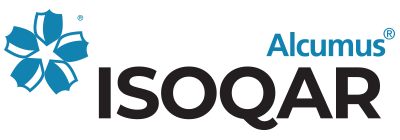
Execution of steel and aluminum constructions
EN 1090
What is EN 1090?
EN 1090 is a European standard that refers to production of steel and aluminum constructions. Specifically, the EN 1090 standard sets requirements for production, assembly and control of steel and aluminum structures, including mandatory technical specifications for all stages of production and installation.
The standard is particularly important for organizations engaged in the design, production and assembly of steel or aluminum building elements, such as steel halls, bridges, columns, staircases, facade systems and other similar constructions.
Key aspects of EN 1090:
Certification of the manufacturing plant: EN 1090 requires manufacturers of steel and aluminum structures to obtain a quality certificate for their production according to EXC (Execution Class) classification, which refers to the complexity and danger of certain types of constructions. Certification is required to ensure product safety and reliability.
Product marking (CE mark): According to EN 1090, all steel and aluminum components must be CE marked. This means that the components are manufactured in accordance with EU standards and legislation and meet the basic technical requirements for safety and health protection.
Technical specifications: The standard defines precise technical requirements related to the production, assembly and quality of steel and aluminum elements, including requirements for welding, material testing, quality control and documentation.
Welder certification: Manufacturers must ensure that their welders and welding operations are certified to the appropriate standards, to ensure the quality of welding and the durability of structures.
Complexity classification: EN 1090 introduces a classification system according to EXC (Execution Class), which defines different levels of complexity and responsibility in the production and assembly of steel structures. The levels range from EXC1 (low risk and less complex construction) to EXC4 (high risk and complex construction such as bridges or tall buildings).
Advantages of EN 1090 certification
Compliance with EU legislation: The implementation of EN 1090 enables manufacturers to comply with European Union legislation, which is crucial for export and construction projects within the EU.
Increasing competitiveness: Having the EN 1090 certificate allows companies to compete on projects that require compliance with European standards, which opens up new business opportunities, especially on EU markets.
Safety and quality: EN 1090 guarantees that products will be manufactured according to high quality standards, thereby reducing the risk of accidents and improving the safety of buildings.
Clients' trust: Having the EN 1090 certificate is proof that the organization attaches importance to quality, safety and compliance with international standards, which increases the trust of clients and partners.
Why choose the EN 1090 certificate?
Choosing the EN 1090 certificate can bring numerous advantages to organizations engaged in the production, assembly and installation of steel and aluminum structures. Although this standard refers to technical requirements and quality, obtaining certification can be very beneficial for a number of reasons:
Increasing competitiveness on the market
The EN 1090 certificate allows organizations to become more competitive in the market, as many projects, especially those in the EU, require compliance with this standard. Without certification, the organization may be excluded from public and private tender procedures, especially those related to high-risk and complex projects, such as bridges, industrial facilities and high-rise buildings.
Compliance with EU legislation
One of the key advantages of EN 1090 certification is compliance with EU legislation. The CE mark, which is mandatory for products according to EN 1090, means that the steel and aluminum components are manufactured in accordance with EU technical requirements, thus enabling the free flow of goods within the EU. This is of crucial importance for organizations that want to export or do business in the EU.
Safety and quality
EN 1090 sets strict technical standards for the production of steel and aluminum structures, including quality control, welding, materials and assembly. The certification guarantees that the products are manufactured and assembled in accordance with high safety and quality standards. This reduces the risk of accidents and breakdowns, which is crucial for facility safety and customer confidence.
Confidence of customers and investors
Having the EN 1090 certificate sends a strong message to customers, partners and investors that the organization respects international standards, has implemented quality control systems and is serious about safety and compliance with legislation. This increases trust in your organization and can lead to new business opportunities.
Increasing efficiency and reducing errors
Application of the EN 1090 standard allows organizations to standardize production and assembly processes, reducing the possibility of errors. All steps in production, from the procurement of materials to assembly, must be documented and conform to the standard, which contributes to more efficient operations and the reduction of errors or accidents.
Improvement of internal control and organization
Certification according to EN 1090 requires the establishment of strict quality controls and standardized procedures within the organization. This process often encourages improved internal organization and better project management, which can increase productivity and reduce costs.
Global recognition
Although EN 1090 is a European standard, its implementation and certification can improve an organization's recognition in the global market. More and more customers around the world are demanding that their suppliers be compliant with EN 1090 to ensure high standards of quality, safety and reliability.
Continuous improvement
In order for an organization to maintain EN 1090 certification, it must continue to improve its manufacturing and operational processes. This implies constant evaluation, revision and improvement of procedures and techniques, which contributes to sustainable growth and business improvement.
Social responsibility and environmental protection
EN 1090 also covers aspects of environmental protection, such as responsible resource management and waste reduction. Certification can help organizations better manage their environmental impact and contribute to sustainability.
Check if your EN 1090 certificate is accredited.
Not all certifications are created equal. You need to make sure that your certificate is issued by an accredited body. A UKAS accredited certification body like Alcumus ISOQAR undergoes regular rigorous checks by the UKAS Accreditation Body to determine whether we are working to the highest standards.
This means that when you have a certificate from a UKAS accredited certification body, you can be sure of its value. Certificates issued by non-UKAS accredited bodies are often not accepted. UKAS accredited certificates are accepted worldwide as proof that you meet global standards and best practice.
You and the employees of your organization have the right to a healthy and safe working environment. The best way to ensure this is to introduce an internationally recognized standard for occupational health and safety management - OHSAS 18001. Our consultants have the expertise and experience to implement the requirements of this standard.
The implemented requirements of OHSAS 18001 means that your management system is monitored and in accordance with the best standards and practices of occupational health and safety.
This international standard is widely distributed in all countries where awareness of workplace risks has been developed. The goal of the standard is to eliminate and minimize risks for employees that they may be exposed to in their workplaces.
Hazard identification, risk assessment, risk control process and risk control results are the basis of the entire occupational health and safety management system.
The benefits of the Health and Safety Management System for employees are multiple:
- Planning, identification of hazards and legal requirements, risk assessment and risk control
- Structure and responsibilities of all employees regarding health and safety at work
- Training, awareness and competence of all employees
- Operational control over all activities in the organization
- Emergency preparedness and response
- Measurement and monitoring
- System review and improvement
OHSAS 18001:2007 is a new amended version of the standard, which is harmonized with the ISO 9001:2008 and ISO 14001:2004 standards for easier mutual integration into a single management system.

